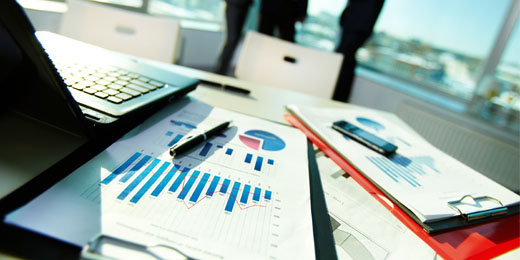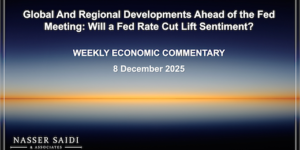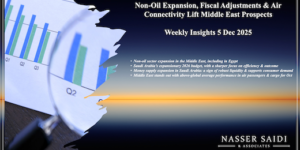Markets
On rising market expectations of a rate cut as early as Jul, US equity markets had a record setting week while the US yield curve steepened by the most in 3 years. European equities – ahead of the Q2 earnings season – took solace from some reassuring economic data while in Asia, markets dipped towards end of the week following Trump’s Twitter comment that China was “letting us down” by not buying agricultural products. The dollar weakened on dovish Fed statements, the pound continues to be battered, sinking to a more than 2-year low last week while most Asian currencies strengthened (world exchange rates 2019: http://tmsnrt.rs/2egbfVh). Oil prices picked up on Middle East tensions while gold prices nudged higher.
Global Developments
US/Americas:
- The Fed Chairman’s Congressional testimony remained dovish: “the case for a somewhat more accommodative monetary policy had strengthened”.
- US posted stronger-than-expected inflation for Jun: core inflation (excluding food and energy) increased by 0.3% mom – the largest increase since Jan 2018. Separately, the producers price index edged up by 0.1% mom and 1.7% yoy – the smallest gain since Jan 2017 – as energy costs fell for a 2nd consecutive month.
- Initial jobless claims fell by 13k to a seasonally adjusted 209k for the week ended Jul 6, recording the lowest since Apr. Continuing claims increased by 27k to 1.72mn for the week ended Jun 29, the highest level since Mar.
Europe:
- German industrial output recovered in May, rising by 0.3% mom following Apr’s 2% fall.
- Germany’s exports grew by 1.1% mom after dropping 3.4% in Apr though imports unexpectedly fell 0.5% resulting in a rise in surplus to EUR 20.6bn.
- German inflation accelerated in Jun rising to 1.5%, up from the initial estimate of 1.3% but still below the ECB’s target. EU-harmonized prices rose by 0.3% on the month – revised up from 0.1%.
- EU industrial production expanded by 0.9% mom in May (Apr: -0.4%), thanks to a 2.7% rise in the output of non-durable consumer goods.
- UK GDP grew 0.3% in May, after declining 0.4% in Apr supported by a partial recovery in car production.
- UK industrial production grew by 1.4% mom and 0.9% yoy in May, recovering from Apr’s upwardly revised 2.9% mom drop, supported by manufacturing (rebounding to 1.4% from -4.2% in Apr).
Asia Pacific:
- China CPI remained at 2.7% yoy in Jun, unchanged from May’s 15-month high, driven largely by a 6.1% yoy increase in food prices. Producers price index stalled in Jun, posting no growth – the weakest reading since Aug 2016 – and down from May’s +0.6%.
- FDI into China increased by 7.2% yoy to CNY 478.33bn (USD 69.7bn) in H1 this year.
- Money supply (M2) grew by 8.5% yoy to CNY 192.14trn at end- Jun while net new yuan loans surged by 40.7% mom to CNY 1.66trn (USD 244bn). Total outstanding social financing rose 10.9% yoy to CNY 213.26trn.
- China’s foreign trade volume expanded by 3.9% yoy to CNY 14.67trn in H1, with imports rising by 1.4% and exports by 6.1%; trade surplus widened by 41.6% yoy to CNY 1.23trn. In June alone, both exports and imports fell by 1.3% yoy (May: +1.1%) and 7.3% (May: -8.5%) respectively; bilateral trade surplus with US widened to a 7-month high of USD 29.92mn.
- Japan machinery orders dropped in May: core orders fell 7.8%mom– the biggest drop since Sep.
- Singapore’s growth slumped in Q2: GDP shrank by 3.4% qoq, posting the biggest quarterly contraction in almost 7 years (since Q3 2012). In yoy terms, GDP grew by 0.1% – the slowest annual growth in a decade. Growth was dragged down by the manufacturing sector, which contracted 3.8% yoy after shrinking 0.4% in Q1.
Bottom line: Trade wars continue to bubble up – Japan-Korea trade spat on tighter export controls gathered pace last week (with Japan reportedly considering the removal of South Korea from a list of trusted export markets); in France, lawmakers approved a tax on big tech companies which is likely to result in retaliatory tariffs from the US; it still remains to be seen whether the relaunch of China-US talks result in any progress, especially as it seems the two sides have different versions of what was agreed at the G20 meeting.
Regional Developments
- Bahrain-UAE bilateral trade touched USD 7.7bn at end-2018, according to the UAE ministry of economy.
- The mean temperature in Bahrain was 36.3 degree Celsius in Jun this year – 3.9 deg above the long-term Jun normal – making it the hottest Jun since 1902.
- Egypt’s inflation dropped to 8.9% in Jun, thanks to lower food prices, while core inflation touched 6.4% (May: 7.8%).
- Egypt’s primary budget surplus grew to EGP 58.2bn (or 1.1% of GDP) during the 11-month period Jul 2018-May 2019 compared to EGP 1.9bn or 0.04% of GDP a year ago. Budget deficit in the 11 months declined by 2.9% yoy to EGP 327.6bn (or 6.2% of GDP). Oil subsidies declined by 13.4% yoy to EGP 55.52bn during the 11-month period.
- Remittances into Egypt declined by 6% to USD 18.211bn in the period Jul 2018-Mar 2019. Trade deficit during this period widened to USD 29.8bn, with exports amounting to USD 20.9bn. Net FDI declined by 22.8% to about USD 4.646bn.
- According to the finance minister, foreign investments are expected to contribute 2.5% of Egypt’s GDP in fiscal year 2019/2020.
- Egypt’s arrears to foreign oil firms declined to USD 900mn at end-Jun from USD 1.2bn a year ago, stated the petroleum minister.
- Jordan’s exports to the EU dropped by 2.6% yoy in Q1 this year while exports to NAFTA nations increased by 2.5%.
- FDI into Jordan dropped by 33mn to USD 251mn in Q1, largely due to a dip in investments in the energy sector.
- Jordan reported a 3.8% yoy drop in passengers travelling through the Queen Alia International Airport in May; ytd, it grew by 5.2% yoy to 3.3mn passengers.
- Net foreign assets of the Central Bank of Kuwait increased by 1.44% yoy and 0.54% mom to KWD 11.25bn (USD 37.06bn). Net assets of Kuwaiti banks grew by 4.4% yoy and 0.11% mom in May, according to the central bank.
- May financial sector update from the Kuwait central bank:money supply (M2) was up by 0.58% yoy to KWD 38.24bn (USD 125.98bn) in May. Loans disbursed by banks grew by 6.04% yoy and 1.1% mom to KWD 37.57bn; debt instruments were down by 29.1% yoy and 6.9% mom to KWD 2.97bn in May.
- Lebanon parliament’s budget committee approved the draft budget with a LBP 500mn drop in expenditures, according to its chair. Local media reported that the committee had managed to find ways reduce the deficit from a proposed 7.6% of GDP to 6.6%.
- Oman improved its ranking in the global economic openness index, jumping seven positions over last year to 53 in 2019. UAE, at 30th, is the highest-ranked in MENA.
- Bank deposits in Saudi Arabia increased by 4.76% yoy and 1.2% mom to SAR 1.669trn in May, according to SAMA data. Credit disbursed grew by 3.75% yoy to SAR 1.469trn.
- Net purchases by foreign investors in Tadawul touched USD 293.3mn by end-Jun, while net purchases by Saudi companies amounted to USD 94mn.
- Saudi Arabia is planning to build 11 desalination plants under its privatisation programme with a total capacity of 4.3mn cubic metres a day.
- The GCC attracted USD 51.6bn in FDI last year, according to the “Investment Climate Report 2019” published by the Arab Investment and Export Credit Guarantee Corporation. Oman received the maximum (USD 19.6bn), followed by Saudi Arabia (USD 15.5bn) and UAE (USD 14.1). Overall investments were made in 635 new projects in the GCC, led by 528 companies, providing 60k new jobs.
- The Bahrain-based International Islamic Financial Market (IIFM) expects to finalise this year a standard suite of documentation for issuing Sukuk Al Ijarah.
UAE Focus
- UAE announced a reduction (by upto 50%) and/ or cancellation of charges on around 1500 federal services for three ministries – Ministry of Interior, Ministry of Economy and the Ministry of Human Resources and Emiratisation.
- Inflation in the UAE fell – for the 5th consecutive month – to 1.09% yoy in May, thanks to declines in housing and utilities (-5.48%), clothing and footwear (-3.39%) as well as food and beverages (-0.96%); education costs however edged up by 1.23%.
- The Dubai Economy Tracker index edged down to 58.4 in Jun (May: 58.5), with the employment sub-index remaining flat at 49.4. Interestingly, while growth in the wholesale and retail sector’s business conditions slowed for the first time this year (59.9 in Jun), construction sector posted the best performance since Nov 2018 (57).
- Banking reserves at the UAE central bank increased by over AED 5bn from end-2018 to AED 298bn (USD 81.1bn) by end-May.
- Abu Dhabi plans to launch new industrial fund by the end of 2019, according to a senior official at the Industrial development Bureau.
- As per an administrative resolution issued by the Abu Dhabi Department of Economic Development, licensed industrial companies in the emirate can add commercial and service activities to their existing licenses.
- Abu Dhabi’s trade with Saudi Arabia increased by 20.6% yoy to AED 18.3bn in Jan-Apr 2019. This accounts for 25.6% of Abu Dhabi’s total trade during the period while about 45% of its total exports in this time frame went to Saudi Arabia.
- UAE spent AED 65.74bn (USD 17.8bn) on social benefits in 2018, or 16.8% of government spending.
- UAE will construct a USD 900mn desalination plant in the northern emirate of Umm al Quwain: the project, to be undertaken by the Federal Electricity and Water Authority along with ACWA Power and MDC Power Holding Company, will see construction begin in H2 this year with initial water production scheduled in 2021.
- UAE will impose a daily maximum of AED 7,000 for cash refunds of VAT for tourists applying through the Tax Refunds for Tourists Scheme. Tourists can recover an unlimited amount of taxes incurred if the amount is transferred to their card (instead of cash).
- Average Dubai property prices are now 29.3% lower than their peak in mid-2014, according to the Q2 ValuStrat Price Index. Residential rentals have also shown a decline of 26.1% since mid-2014, dropping 3.4% quarterly and 10.7% annually.
Media Review
The Fed’s dovish turn looks like a surrender: FT
https://www.ft.com/content/78441c44-a3fe-11e9-a282-2df48f366f7d
Global Recession Risks Are Up, and Central Banks Aren’t Ready
https://www.nytimes.com/2019/07/09/business/economy/recession-world-economy-federal-reserve.html
Does the G20 still matter?
https://www.project-syndicate.org/commentary/does-the-g20-still-matter-by-jim-o-neill-2019-07
Chinese loans to poor countries are surging
https://www.economist.com/graphic-detail/2019/07/12/chinese-loans-to-poor-countries-are-surging
Japan-South Korea feud deepens
https://www.reuters.com/article/us-southkorea-japan-laborers/japan-south-korea-feud-deepens-with-disputed-accounts-of-trade-meeting-idUSKCN1U8084
The age of Global Supply Chain is in trouble
https://www.bloomberg.com/opinion/articles/2019-07-09/global-supply-chains-that-made-goods-cheaper-are-in-trouble
Powered by:









